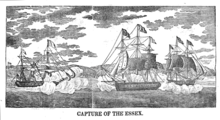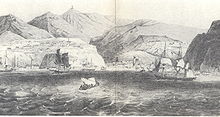
HMS Orion was a Leander-class light cruiser which served with distinction in the Royal Navy during World War II. She received 13 battle honours, a record only exceeded by HMS Warspite and matched by two others.

Rear Admiral Sir Christopher George Francis Maurice Cradock was an English senior officer of the Royal Navy. He earned a reputation for great gallantry.

Huáscar is an ironclad turret ship owned by the Chilean Navy built in 1865 for the Peruvian government. It is named after the 16th-century Inca emperor, Huáscar. She was the flagship of the Peruvian Navy and participated in the Battle of Pacocha and the War of the Pacific of 1879–1883. At the Battle of Angamos, Huáscar, captained by renowned Peruvian naval officer Miguel Grau Seminario, was captured by the Chilean fleet and commissioned into the Chilean Navy.

HMS Uganda was a Second World War-era Fiji-class light cruiser launched in 1941. She served in the Royal Navy during 1943 and 1944, including operations in the Mediterranean, and was transferred to the Royal Canadian Navy as HMCS Uganda in October 1944. She served in the Pacific theatre in 1945 and was put into reserve in 1947. When she was reactivated for the Korean War in 1952 she was renamed HMCS Quebec. She was decommissioned for the last time in 1956 and scrapped in Japan in 1961.

The North America and West Indies Station was a formation or command of the United Kingdom's Royal Navy stationed in North American waters from 1745 to 1956, with main bases at the Imperial fortresses of Bermuda and Halifax, Nova Scotia. The North American Station was separate from the Jamaica Station until 1830 when the two combined to form the North America and West Indies Station. It was briefly abolished in 1907 before being restored in 1915. It was renamed the America and West Indies Station in 1926. It was commanded by Commanders-in-Chief whose titles changed with the changing of the formation's name, eventually by the Commander-in-Chief, America and West Indies Station.

The first HMS Shah was a 19th-century unarmoured iron hulled, wooden sheathed frigate of Britain's Royal Navy designed by Sir Edward Reed. She was originally to be named HMS Blonde but was renamed following the visit of the Shah of Persia in 1873.
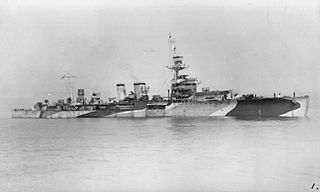
HMS Danae was the lead ship of the Danae-class cruisers, serving with the Royal Navy between the world wars and with the Polish Navy during the latter part of World War II as ORP Conrad.

HMD Bermuda was the principal base of the Royal Navy in the Western Atlantic between American independence and the Cold War. The Imperial fortress colony of Bermuda had occupied a useful position astride the homeward leg taken by many European vessels from the New World since before its settlement by England in 1609. French privateers may have used the islands as a staging place for operations against Spanish galleons in the 16th century. Bermudian privateers certainly played a role in many English and British wars following settlement, with its utility as a base for his privateers leading to the Earl of Warwick, the namesake of Warwick Parish, becoming the most important investor of the Somers Isles Company. Despite this, it was not until the loss of bases on most of the North American Atlantic seaboard threatened Britain's supremacy in the Western Atlantic that the island assumed great importance as a naval base. In 1818 the Royal Naval Dockyard, Bermuda officially replaced the Royal Naval Dockyard, Halifax, as the British headquarters for the North America Station (which would become the North America and West Indies Station after absorbing the Jamaica Station in 1830.
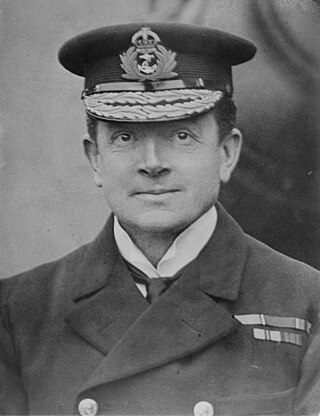
Admiral of the Fleet Sir Somerset Arthur Gough-Calthorpe, sometimes known as Sir Somerset Calthorpe, was a Royal Navy officer and a member of the Gough-Calthorpe family. After serving as a junior officer during the Fourth Anglo-Ashanti War, he became naval attaché observing the actions of the Imperial Russian Navy during the Russo-Japanese War and then went on to command an armoured cruiser and then a battleship during the early years of the 20th century.
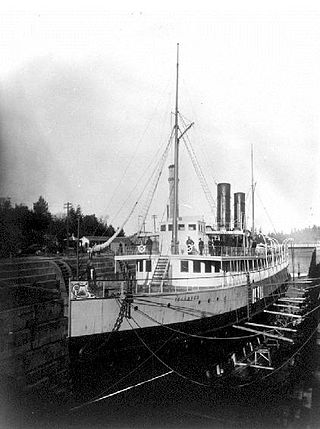
Esquimalt Royal Naval Dockyard was a major British Royal Navy yard on Canada's Pacific coast from 1842 to 1905, subsequently operated by the Canadian government as HMC Dockyard Esquimalt, now part of CFB Esquimalt, to the present day.

Fort Rodd Hill National Historic Site is a 19th-century coastal artillery fort on the Colwood side of Esquimalt Harbour,. The site is adjacent to Fisgard Lighthouse National Historic Site, the first lighthouse on the west coast of Canada. Both the fort and lighthouse are managed and presented to the public by Parks Canada.

In the Canadian Armed Forces, Maritime Forces Pacific is responsible for the fleet training and operational readiness of the Royal Canadian Navy in the Pacific Ocean. It was once referred to as Canadian Pacific Station.
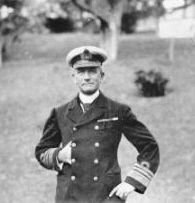
Admiral Sir George Edwin Patey, was a senior officer in the Royal Navy.

Admiral Sir Montague Edward Browning, was a senior Royal Navy officer who served as Second Sea Lord and Chief of Naval Personnel.

Admiral Sir Irvine Gordon Glennie KCB was a Royal Navy officer who went on to be Commander-in-Chief, America and West Indies Station.

The Eastern Fleet, later called the East Indies Fleet, was a fleet of the Royal Navy which existed between 1941 and 1952.

The Flying Squadron was a Royal Navy squadron formed at least three times. Its first formation existed from June 1869-November 1870.
HMCS Prince Robert was the first of three refrigerated passenger and cargo ships constructed at Birkenhead for Canadian National for operation along the British Columbia Coast during the 1930s. The ship's arrival during the Great Depression led to the vessel's financial failure and by 1935, the ship was in limited use. With the onset of World War II, the Royal Canadian Navy acquired the vessel for use as an armed merchant cruiser for protection of western coast of Canada. Upon completion, Prince Robert and her sister ships were the most powerful ships operated by the Canadians until the arrival of larger cruisers later in the war. Converted at Esquimalt, British Columbia and commissioned into the Royal Canadian Navy in September 1940, Prince Robert saw its first action along the Mexican coast, capturing the German freighter Weser later that month. Prince Robert then continued patrolling along the Pacific coast of North America, then being sent to Australia to escort troop convoys across the Pacific.

Lord Salisbury described Malta, Gibraltar, Bermuda, and Halifax as Imperial fortresses at the 1887 Colonial Conference, though by that point they had been so designated for decades. Later historians have also given the title "imperial fortress" to St. Helena and Mauritius.

